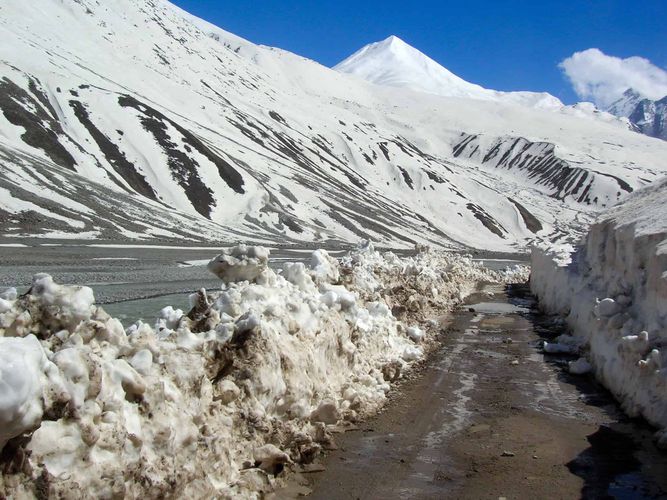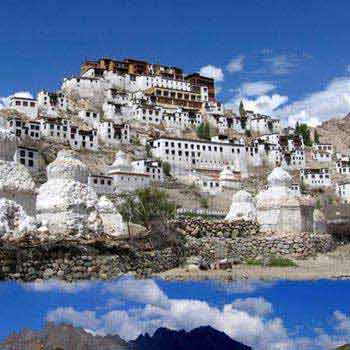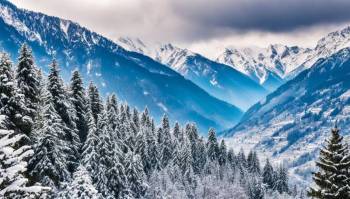8 Nights / 9 Days

Quotation Price
@20,000/- Per person
No. of Adults
06 Adults on sharing basis
Hotel Details
Night 1, Hotel Snow Flake Saharan, Deluxe
Night 2, Hotel Apple pie or Hotel Rupin River View, Sangla, Deluxe
Night 3, Hotel Apple pie or Hotel Rakpa Regency, Kalpa, Deluxe
Night 4, Hotel Lake view Nako, Deluxe
Night 5, 6, Parasol camps Shego or Hotel Zangchuk, Hotel Kunga Kaza, Deluxe
Night 7, Parasol camps Chandertal (Swiss cottages) Deluxe,
Cab Details
Innova / Marazzo / Scorpio
Meals: No Meals
Reach ISBT Kashmiri gate Volvo point Delhi (on your own) before 9:00 pm, after Delhi arrival start Overnight Journey from Delhi to Shimla by Volvo coach.
Meals: Dinner
Today as discussed our driver will pick you from Volvo stand and straight drive to Sarhan. We will drive pass from Theog, Narkanda & will continue our journey on Indo Tibet Highway. We will reached at afternoon and check in to the hotel and take some rest and after that take blessing of Shri Bhima Kali Temple is a temple at Sarahan in Himachal Pradesh in India, dedicated to the mother goddess Bhimakali, presiding deity of the rulers of former Bushahr State. The temple is situated about 180 km from Shimla and it is as holy as 51 Shakti Peethas.
Late Afternon explore this beautiful village and take walk around the valley.
Meals: Breakfast & Dinner
Morning after breakfast drive to Sangla it will take around 6 hrs to reach
�����Բ�������
Evening you will be taken on a walk through Kamru and Sangla villages and we will visit the beautifully carve old temples and Buddhist monasteries. You will have plenty of opportunity to speak to the local people in these valleys, and our guide will be happy to interpret. The valley is also known as the Baspa Sangla valley, after river Baspa which flows through the valley and it is the part of Kinnaur valley.
The Bering Nag Temple Is Another Popular Nearby Temple And Religious Sightseeing Destination Of Sangla. This Temple Is Dedicated To God Jagas. Its Most Popular Feature Is The Fulaich Fair, Held Here Every Year Between The Months Of August And September. This Is The Temple Of The Local Deity Situated In The Center Of The Village. It Forms The Central Point Of All The Functions And Religious.
Overnight in Sangla.(Breakfast & Dinner)
Meals: Breakfast & Dinner
This morning after breakfast we will be driving you to Chitkul (1 hrs.) which is the last village on Indian side on the Indo–Tibetan border. The village of Chitkul is like something from a fairy tale, and you will have a chance to walk slowly around it. The landscapes are stunning, and you will have plenty of time to enjoy them and talk to the local people. We will return to Sangla for lunch and the rest of the day is free or if you like you can walk to another of the nearby villages with your guide The Sangla Meadows Also Known As Sangla Kanda Is Another Natural Sightseeing Attraction In Sangla. This Place Is Completely Covered In Greenery And Surrounded By Snowcapped Mountain Ranges Of The Himalayas. It Also Forms A Perfect Site To See The KinnerKailash In An 180 Degree View. This Place Will Also Provide A View Of The Local Huts Of Himachal Along With The Sustoms And Lifestyle Of Its Local People.
The Baspa River Is A Fast Flowing River That Passes Through The Hills Of Sangla. The Surroundings Of Baspa River Provide An Opportunity To View Timely Rainbows And Brown Trout. It Is Also An Angler’s Paradise For Being ��Ӱֱ�� To A Vast Variety Of Fishes. Crossing This River Is Also Quite An Attraction Amongst The Visitors As This Process Involves Ride In A Basket Along The Way. Its Surrounding Areas Also Stand Appropriate For Campers And Trekkers.
Kalpa is a small town in the Sutlej river valley, above Recong Peo in the Kinnaur district of Himachal Pradesh, Northern India, in the Indian Himalaya. Inhabited by Kinnauri people and famous for its apple orchards. Kalpa is a town with a history of ancient temples. The Sutlej River below hurtles through deep gorges, the winding mountain road is bordered by chilgoza forests. The serenity of this sleepy hamlet was not often visited by foreigners until recently, but there are still relatively few visitors. There are now over 5 places to stay in Kalpa and more, below, in Reckong Peo where travelers must stop to get their inner line permits to continue upwards to the Spiti Valley, which is a small ancient part of what used to be Tibet. The view from Kalpa is beautiful with an observer getting the feeling that he is sitting in the lap of the mountains with the entire range of peaks being visible. Also visible from this place is the sacred Shivling rock on the Kailash mountain that changes its color at different points in the day. Dinner and overnight stay
Overnight in kalpa.(Breakfast & Dinner.)
This day after breakfast check out from the hotel and drive to Tabo en- route we can visit Nako, Gue Village for Mummy After Nako we will continue our drive, it is not a day travelling. Today we will be entering the beautiful Spiti valley which is also known as the cold desert of the Himalayas ( as this area is cut from rest of the world due to heavy snow in the winters).
After crossing Mulling will continue on main road & take deviation of 15 Kms to reach Gue Village.
Gue Village in Spiti Valley, about 40 km from the Tabo Monastery, has a mummified monk, Sangha Tenzin, who had given up his life while meditating and is more than 500 years. It is the only Buddhist Mummy in the world, that too, in a sitting position. There were other mummies also in Tibet which were buried by Tibetans just after the Chinese invasion. This mummy was discovered by the villagers in 1975 when an earthquake struck the region. Gue village is a restricted area and under the control of ITBP and very few people knew about the mummy until Anuj Singh (A freelance photographer) and his fellow biker Shahwar Hussain (An auto and travel magazine writer) first photographed it way back in the 90’s.Gue Village in Spiti Valley, about 40 km from the Tabo Monastery, has a mummified monk, Sangha Tenzin, who had given up his life while meditating and is more than 500 years. It is the only Buddhist Mummy in the world, that too, in a sitting position. There were other mummies also in Tibet which were buried by Tibetans just after the Chinese invasion. This mummy was discovered by the villagers in 1975 when an earthquake struck the region. Gue village is a restricted area and under the control of ITBP and very few people knew about the mummy until Anuj Singh (A freelance photographer) and his fellow biker Shahwar Hussain (An auto and travel magazine writer) first photographed it way back in the 90’s.
After visiting Gue Village will drive to Tabo, on arrival check in at hotel. Late afternoon will proceed to Tabo Monastery.
Tabo Monastery is also referred to as the Ajanta of the Himalayas with a complex that holds nine temples, 23 chortens, a monks’ chamber and an extension that houses the nuns chamber. The monastery’s importance can be judged from the fact that its significance is second only to the Tholing Gompa in Tibet in the entire Himalayan region.
The monastery’s complex has nine temples built between the late 10th and the 17th century. The monastery has temples of Tug-Lha-Khang (The Temple of the Enlightened Gods), Ser-Khang (The Golden Temple), Dkyil- Khor-Khang (The Mystic Mandala Temple) and Brom-ston Lha khang (The Temple of Dromton) are the few very important to name. Tabo is famous for its exquisite murals and stucco sculptures which bear a striking resemblance with the paintings and sculpture in the Ajanta caves. The monastery also treasures some centuries old paintings which are not allowed to be photographed. Above the monastery, there are a number of caves carved into the cliff face used by monks for meditation.
The unique beauty of its art and its pivotal historical role in the transmission of Indo-Tibetan Buddhism and culture in the 10th and 11th century makes Tabo Monastery an historically significant site. The main temple preserves an extraordinary wealth of documentation of the history and culture of the period.
Dinner & Overnight stay
Meals: Breakfast & Dinner
This day after breakfast check out from the hotel and drive towards Tabo Continue your drive to Nako Nako – a scenic hamlet – known for its namesake lake.The unspoilt, serene and picturesque village of Nako is located in Kinnaur District of Himachal Pradesh at a height of around 3600m. Nako is found at the east end of Kinnaur Valley and can be called almost the last attraction on the way to Malling Nullah. Malling Nullah is located in between Kinnaur and Spiti Valley and one of the most happening travel destinations of Himachal Pradesh. Nako lies on the region close to Tibbetan Border and travellers thus need to possess inner line permit to travel to this region. Inner line permits are required for the foreign nationals for overnight stay in any part of the village Nako.
As the village is very small in its area, one can easily explore the hidden gems of this village on foot. The major attraction of Nako Village is the Nako Lake which is located amidst extremely hilly terrains. Close to this lake one can get to see four Buddhist monasteries and a huge footlike impression After Nako we will continue our drive towards Tabo you will be driving to Tabo . It is not a day travelling but , Today we will be entering the beautiful Spiti valley which is also known as the cold desert of the Himalayas ( as this area is cut from rest of the world due to heavy snow in the winters).
Later continue, drive to Tabo enroute visit Gue Monastery .
Gue Village in Spiti Valley, about 40 km from the Tabo Monastery, has a mummified monk, Sangha Tenzin, who had given up his life while meditating and is more than 500 years. It is the only Buddhist Mummy in the world, that too, in a sitting position. There were other mummies also in Tibet which were buried by Tibetans just after the Chinese invasion. This mummy was discovered by the villagers in 1975 when an earthquake struck the region. Gue village is a restricted area and under the control of ITBP and very few people knew about the mummy until Anuj Singh (A freelance photographer) and his fellow biker Shahwar Hussain (An auto and travel magazine writer) first photographed it way back in the 90’s.Gue Village in Spiti Valley, about 40 km from the Tabo Monastery, has a mummified monk, Sangha Tenzin, who had given up his life while meditating and is more than 500 years. It is the only Buddhist Mummy in the world, that too, in a sitting position. There were other mummies also in Tibet which were buried by Tibetans just after the Chinese invasion. This mummy was discovered by the villagers in 1975 when an earthquake struck the region. Gue village is a restricted area and under the control of ITBP and very few people knew about the mummy until Anuj Singh (A freelance photographer) and his fellow biker Shahwar Hussain (An auto and travel magazine writer) first photographed it way back in the 90’s.
Tabo Monastery is also referred to as the Ajanta of the Himalayas with a complex that holds nine temples, 23 chortens, a monks’ chamber and an extension that houses the nuns chamber. The monastery’s importance can be judged from the fact that its significance is second only to the Tholing Gompa in Tibet in the entire Himalayan region.
The monastery’s complex has nine temples built between the late 10th and the 17th century. The monastery has temples of Tug-Lha-Khang (The Temple of the Enlightened Gods), Ser-Khang (The Golden Temple), Dkyil- Khor-Khang (The Mystic Mandala Temple) and Brom-ston Lha khang (The Temple of Dromton) are the few very important to name. Tabo is famous for its exquisite murals and stucco sculptures which bear a striking resemblance with the paintings and sculpture in the Ajanta caves. The monastery also treasures some centuries old paintings which are not allowed to be photographed. Above the monastery, there are a number of caves carved into the cliff face used by monks for meditation.
The unique beauty of its art and its pivotal historical role in the transmission of Indo-Tibetan Buddhism and culture in the 10th and 11th century makes Tabo Monastery an historically significant site. The main temple preserves an extraordinary wealth of documentation of the history and culture of the period.
Dinner & Overnight stay.
After early breakfast start drive to Chandertal, enroute will cross Kunzum La.
After breakfast proceed for the sightseeing of Ki,Kibber,Hikkim,Komic & Langza.
Kye Monastery was established by a Buddha’s Disciple named Drompton in the 11th century and is one of the main training centres for lamas in this region. Situated at an altitude of 4115 metres and is also known as the ‘Little Tibet’. The Monastery specializes in certain specific subjects like sadhana, Buddha hood, Cosmology and Physiology and is the most frequented religious destinations for the Buddhists in the state along with the Tabo Monastery. The monastery is around 12 km north of Kaza in the Spiti valley above Kye village and you can also hike it easily.
Numerous invasions, natural calamities and patch-work as reconstruction has given it a box-like structures giving it a look of a fort with temples built on top of one another. There are low rooms and narrow corridors, not so well lit passages, difficult staircases and small doors lead to prayer rooms which themselves do not conform to a single design. There are three floors, the first one is mainly underground and used for storage. One room, called the Tangyur is richly painted with murals. The ground floor has the beautifully decorated Assembly Hall and cells for many monks.
Kye Monastery has Thangkas (a painted or embroidered Tibetan banner), valuable manuscripts of high aesthetic value, images, unique wind instruments and on the top of all this a collection of weapons which were probably made use of to defend the monastery from the attackers. The wind instruments are still put to use in summers during Chaam. Around the month of June and July, the Kye Monastery celebrates a festival wherein Chaam dances are followed by a procession that reaches the ritual ground below the monastery. Here, a large butter sculpture of a demon is set on fire.Locals here also run an old age home for people looking for salvation in their old age.
Komic monastery also known as the Tnagyud Monastery has the honor of being one of the world’s highest motorable monastery at 4587 mts overlooking the Komic village and mountain peaks. As per the sacred ‘Gum Maro’ (Red Box) kept in the monastery, it was foretold in Tibet that a monastery would be built in Spiti in the backdrop of a mountain with the shape of a snow lion on the left and a beheaded eagle on the right hand side with 4 springs in the vicinity. The area in between these mountains was to be in the shape of the eye of a snow cock, which was foretold as the exact location where the Monastery would be built. On the basis of this, the area was to be named Komic (‘Ko’– Snow Cock, ‘Mic’– Eye). The monastery is known as the Komic Lundup Tsemo Gompa and dates to the early 14th century built like a fortified castle with massive slanted mud walls and battlements with vertical red ochre and white vertical stripes. In Komic, there are only about a dozen houses with the total population being between 50-60 people. Other than this, there are the Lamas staying at the monastery throughout the year. The most interesting part is to imagine people living at such an altitude where mobile phones don’t work, the climate is harsh, there is no source of basic amenities and the village is completely cut- off from the rest of the world during the winters due to snow from November to March. The winter characterizes harsh winds and heavy snow where temperatures fall to -30 degrees Celcius.
Later visit Langza Village,, it is situated at an altitude of 4200 meters, is one of the most picturesque villages of Spiti located on the highland meadows with snow capped mountain ranges forming the backdrop. The village is adorned by a beautiful image of Buddha and an ancient temple more aptly called ‘Lang’ said to be the Abode of the Deities of the region and over 1000 years old. The beautiful peak of Chau Chau Kang Nilda makes the view of this village even more beautiful.
Langza is also well known for its rich fossil reserves. Millions of years ago, Spiti lay submerged under the Tethys sea. Fossils of sea life can easily be found scattered close to the village. Regular fossil excursions are organized for a unique insight into the history of the Himalayas.Hikkim also just happens to be the highest polling station& highest post office in the world as well. If the season is right, gorge on freshly picked peas from the farms, run behind a Yak or sit endlessly watching the locals herd their cattle. Stroll up to the Komik Monastery, whose claim to fame is the being the highest monastery in the world with a motorable road. Evening return back to Kaza, overnight at hotel.
Overnight at hotel. (Breakfast & Dinner)
Meals: Breakfast & Dinner
After early breakfast start drive to Chandertal, enroute will cross Kunzum La.
Kunzum Pass is a high mountain pass at an elevation of 4,590 m (15,059 ft) above the sea level, located on the eastern Kunzum Range of the Himalayas, in India. It is one of India’s highest motorable mountain pass. It,s the highest point in the Spiti Valley Road.
The road over the pass is not a road. Just a dirt track leading upto the top of the hill. It links the Kullu Valley and Lahaul Valley with the Spiti Valley of Himachal Pradesh. The surface on this gravel road is often loose, especially along the sides of the road. Continue drive to Chandertal, on arrival check in at tents.
Chandra taal is a beautiful lake in the heart of Peerpanjal mountain range at an altitude of about 4,300 metres in the Himalayas. This lake looks especially beautiful on a full moon night which is why is it is called The Moon Lake; “Chandra” (meaning Moon) and “Taal” (meaning lake). During the day, the lake appears blue in color, and a greenish tinge appears towards the evening. The lake is situated on a plateau (Samudra Tapu) overlooking the Chandra River which originates from a glacier near Bara- lacha-la. Chandra Taal is a popular destination for trekkers and campers. The lake is accessible on foot only for few months in a year, from May to September.
Overnight at Camp. (Breakfast & Dinner)
Meals: Breakfast
Post a delectable breakfast, drive back to Manali Later evening you Will Reach Manali for your onward journey.
Weekend Himalayas is a one-of-a-kind tour operator situated in Sunni, Himachal Pradesh, that offers a wide range of travel options. We are a well-known travel agency in Sunni, Himachal Pradesh, offering high-quality tour packages from the city.
Sunni, Himachal Pradesh, is where our organisation was founded. We have been regularly improving our skills and understanding in the travel and tourism industries. Finally, overcoming several challenges, we are actively engaged in the field of knowledge-based tourism.
Working together to meet the demands of our clients has resulted in outstanding results. Our partnership is built on trust, respect, and comprehension, as well as enjoyment.
Key Strengths:
- Our team, plans, manages and executes a wide range of events: Weekend Himalayas has an experienced event management staff. We make ensure that the client is supplied with feasible solutions.
- Excellent values and exceptional service: Our Events help the economic growth of its clients via high performance and the best service.
- Always followed industry conventions: To ensure the accomplishment of event management, we always followed industry norms. These standards have helped us become the most trustworthy service provider in the Indian market.
What We Do:
We are a well-known event management and travel organisation service that is recognised for addressing a wide range of consumer needs. Our staff is skilled in organising, organizing, and executing projects due to excellent teamwork. Weekend Himalayas offers clients one-of-a-kind and flexible services by infusing creativity into each project.
Why Us?
We believe in making our clients' special event memories endure a lifetime. To assure quality at every level, our workforce is armed with cutting-edge equipment and new ideas.
Read More...

 7D/6N
7D/6N
Uttrakhand Tour For 06 Nights 07 Days
Mussoorie - Nainital - Rishikesh - Corbett
 7D/6N
7D/6N
 7D/6N
7D/6N
Chandigarh City - Shimla - Kinnaur - Sangla - Chitkul - Kalpa - Kaza
 8D/7N
8D/7N
 6D/5N
6D/5N
 5D/4N
5D/4N
Himachal Tour For 04 Nights 05 Days By V..
Kullu - Manali - Manikaran - Kasol
 8D/7N
8D/7N
Himachal Tour For 07Nights 08Days By Vol..
Kullu - Manali - Manikaran - Kasol
 7D/6N
7D/6N
6Night 7Days Himachal Tour Package
Shimla - Kinnaur - Lahaul & Spiti - Kalpa - Kaza
 6D/5N
6D/5N
Himachal Tour For 05 Nights 06 Days Pack..
Kufri - Manali - Manikaran - Shimla - Kasol
 9D/8N
9D/8N
Birding Tour for Corbett and Uttarakhand
Corbett - Pangot - Kumaon - Sundargarh - UP East - Sahibabad
 9D/8N
9D/8N
 9D/8N
9D/8N
Honeymoon Tour To New Zealand - Colors O..
Auckland - Rotorua - Queenstown - Christchurch
 9D/8N
9D/8N
 9D/8N
9D/8N
 9D/8N
9D/8N
Ahmedabad - Bhuj - Kutch - Dwarka - Somnath - Rajkot - Sasangir
 9D/8N
9D/8N
 9D/8N
9D/8N
 9D/8N
9D/8N
New Delhi - Katra - Anantnag - Srinagar - Ganderbal - Baramulla
 11D/10N
11D/10N
Himachal Pradesh Tour Package 10 Night -..
Dalhousie - Khajjiar - Kufri - Manali - Shimla - Dharamshala - Amritsar - Mcleodganj
 11D/10N
11D/10N
10Night Himachal Pradesh Tour Ex - Shimla
Dalhousie - Khajjiar - Kufri - Manali - Shimla - Dharamshala - Amritsar - Mcleodganj
 11D/10N
11D/10N
Himachal Pradesh Tour Package 10 Night -..
Dalhousie - Khajjiar - Kufri - Manali - Shimla - Dharamshala - Amritsar - Mcleodganj
 6D/5N
6D/5N
 10D/9N
10D/9N
9 Night - 10 Days Himachal Pradesh Tour ..
Dalhousie - Khajjiar - Kufri - Kullu - Manali - Shimla - Dharamshala - Amritsar - M..
 3D/2N
3D/2N
 5D/4N
5D/4N
 3D/2N
3D/2N
 7D/6N
7D/6N